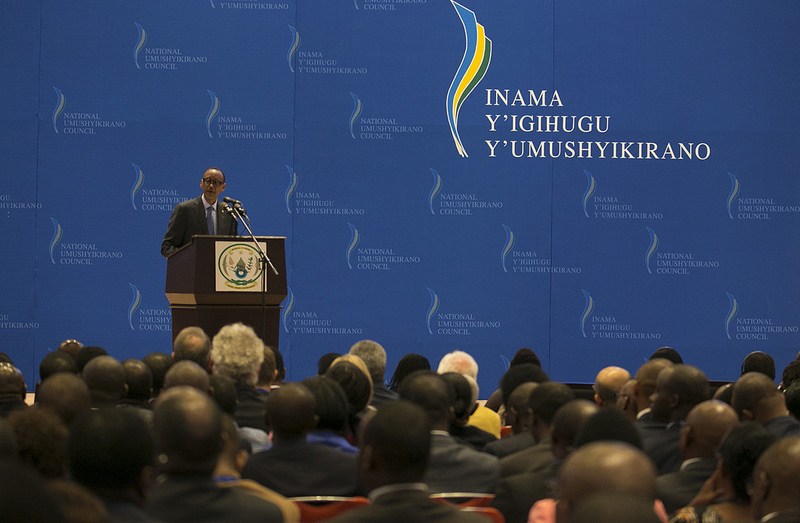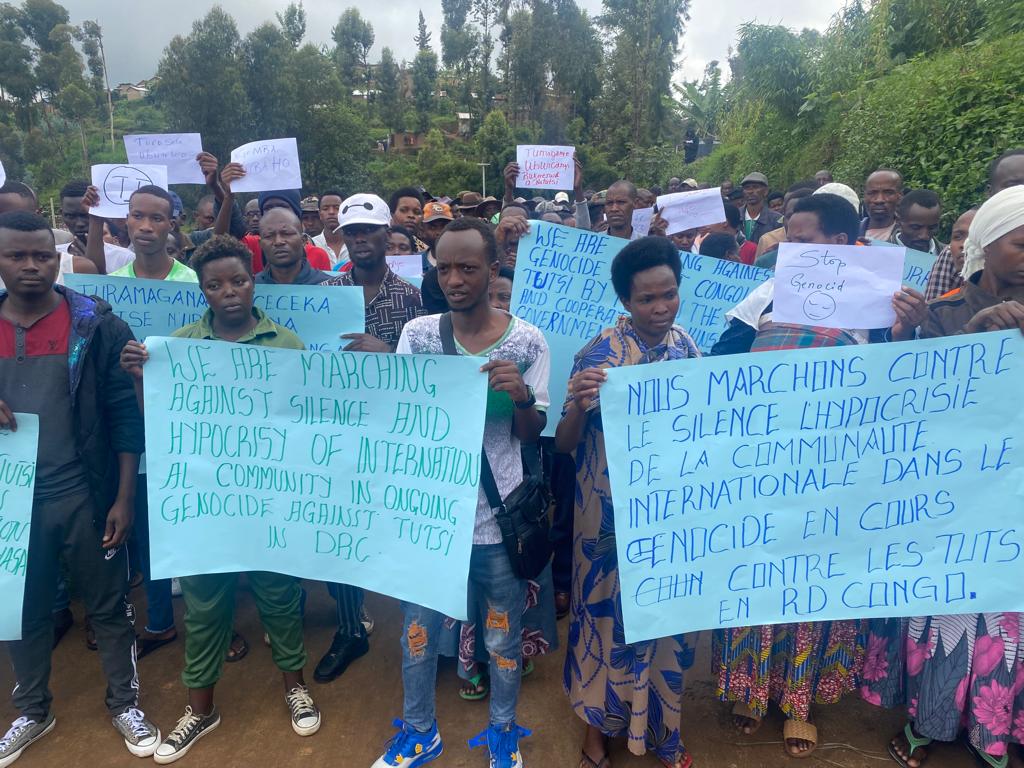Regional
Rwanda: Umushyikirano, a unique platform for participatory democracy

In Rwanda, the National Dialogue Council, also
known as Umushyikirano, is one of the
home-grown solutions that aims at enriching and adapting the country’s
development programs to its needs and context.
Grounded in Article 168 of the Rwandan Constitution, Umushyikirano is an annual event
chaired by the President of Rwanda. It gives Rwandans from all walks of life the
opportunity to have discussions directly with their leaders.
The event is attended by members of cabinet
and parliament, representatives of the Rwandan community abroad, local
government officials, the media, the diplomatic community and others invited by
the Head of State.
Those unable to attend in person participate through
calling in by telephone, SMS, Twitter and Facebook or follow the discussions
live on television and radio. Umushyikirano serves as a leading example of
participatory and inclusive governance. By directly engaging with their
leaders, Rwandans are part of the decision-making process on matters that
affects their lives.
Introduced in
2003, the event has become a forum for Rwandans to hold their leaders to
account.
Each Umushyikirano has a theme on which
participants pose questions, or deal with any other development issue. Once a question
is asked, either in person or virtually, the leader in charge responds. All questions
are recorded. All issues raised are tackled as national issues.
After three years of
suspension because of Covid-19 restrictions, Umushyikirano is now back and is expected to take place on February
27-28.
It is going to be time for
celebrating the country’s recent achievements including hosting the June 2022 commonwealth
heads of state and government meeting (CHOGM) peacefully, holding accountable
the pending deliverables from government, and highlighting public opinions and
wishes based on the current state of the nation.
How impactful has Umushyikirano been?
In 2012, Umushyikirano was held under the theme “Agaciro: Aiming for self-reliance,”
where discussions based on promoting principles and values of self-reliance in
Rwanda.
It was after Agaciro
Development Fund was initiated by Rwandans in December 2011 at the ninth
Umushyikirano, as the Rwanda's sovereign wealth fund. The then theme was
“Strive for our dignity, together we pitch for rapid development”, with aim of
focusing on approaches used by Rwandans to find home grown solutions and self-
development.
“The new Rwanda is about
building an economy that delivers prosperity and development for our citizens
based on a robust private sector. Foreign adventures would be costly and
counterproductive distractions from this challenging objectives,” said
President Paul Kagame to Tony Metcalf of metro, a US based media, following Agaciro
Development Fund initiative.
The same year, Umushyikirano discussed the second economic
development and poverty reduction strategy (EDPRS II) which was published in
May 2013, to be implemented until 2018. The previous EDPRS I was set 2008-2012.
The EDPRS II was one of a
series of medium-term national poverty reduction and economic development
strategies used in implementing ‘Vision 2020’ which was a translation of
Rwandans’ aspirations for the future of their country, in the post 1994
Genocide recovery.
The Vision presented a
framework and key priorities for Rwanda’s development and a guiding tool for
the future, and was ambitious to overcome poverty and foster unity and
reconciliation.
As result, Rwanda
experienced robust economic and social performance. Growth averaged 7.2 per
cent a year over the decade to 2019, while per capita gross domestic product
(GDP) grew at 5 per cent.
Infrastructure developed as
well.
The Kivu Belt road opened in
2017, linking five districts in Western province – Rusizi, Nyamasheke, Karongi,
Rutsiro and Rubavu – and connecting Rwanda to neighboring countries - DRC and
Burundi.
Gisagara which was, for long,
labeled as Rwanda’s only district without a tarmac road, since 2020 got Huye–Ndora
road. Others include the Nyaruguru-Huye road and Gicumbi-Base road.
It is safe to say that the
government delivered and, now citizens are maximizing their business activities,
as movement of goods and services now takes shorter time.
Transformational ideas that
have come out of Umushyikirano
include the idea of mediation committees (Abunzi) who contribute to solving
local disputes without intervention of courts.
To prevent stunting and
malnutrition as well as reduce poverty, Rwandans proposed the idea of having at
least one cow per poor family (Girinka), for improving health and wealth.
Through the platform, the
government has worked to provide access to safe drinking water within less than
30 minutes from citizens’ home. Accessing electricity has increased, and 84 per
cent of Rwandans are offered access to healthcare, mutuelle de santé, which allows the citizens to have access to
primary health care.
Among Rwandans, Umushyikirano is seen as one of the most
effective approach of the country’s governance philosophy and consensual
democracy.
It not only promotes
accountability as a value but also nurtures Rwandans’ ownership of all
developments in the country.



.jpeg-20230224104259000000.jpeg)

.jpeg-20230222113211000000.jpeg)

.jpg-20230221102203000000.jpg)